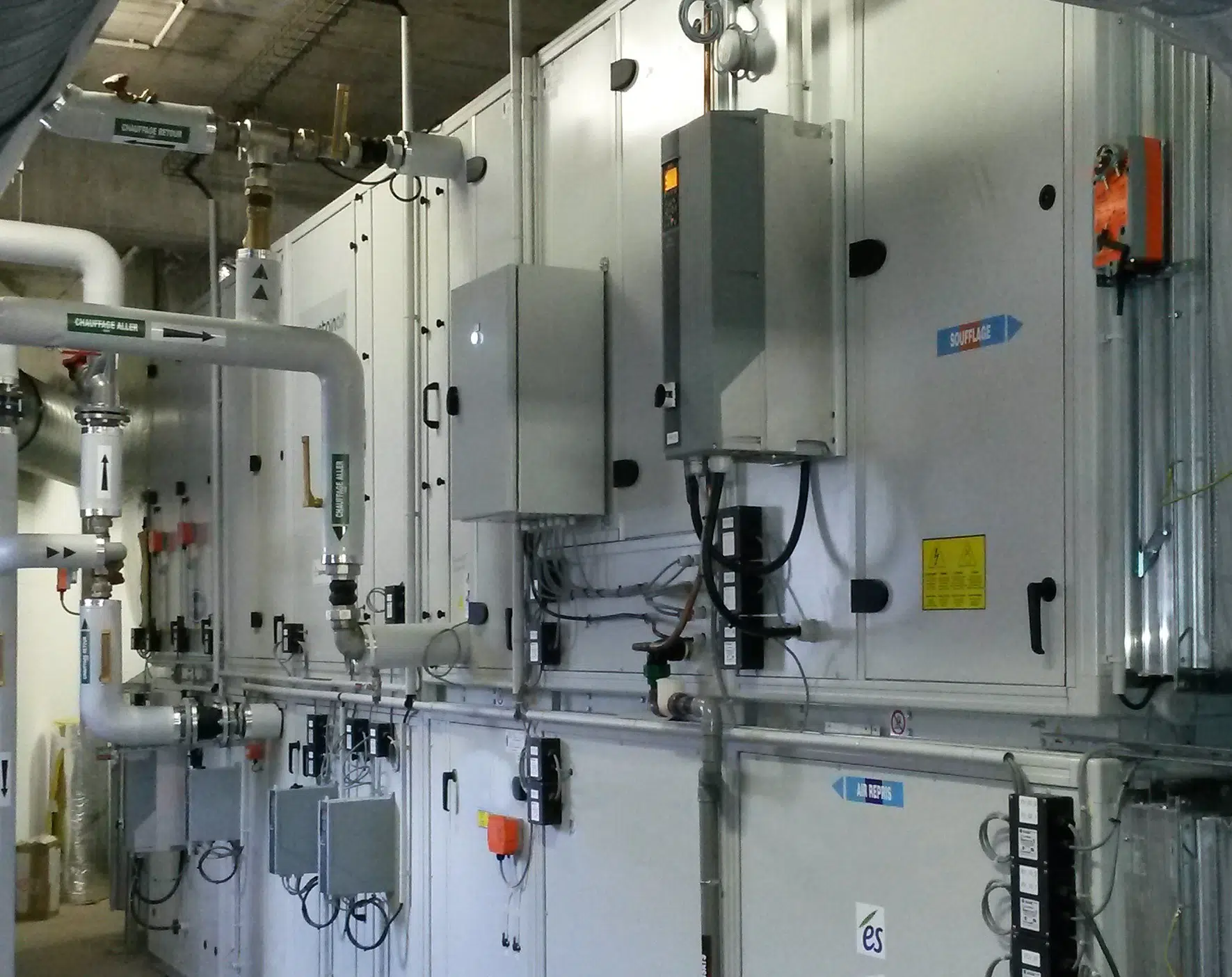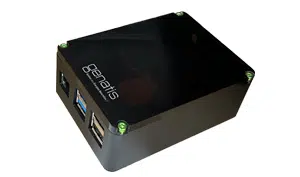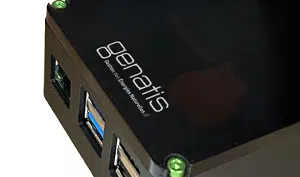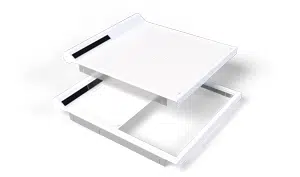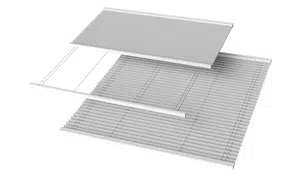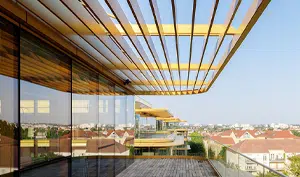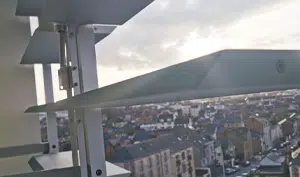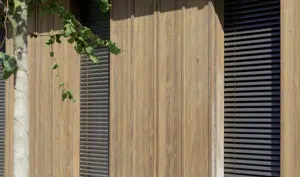
Controlling adjustable sunshades ensures the optimal tilt angle of the blades to counter direct sunlight and maintain maximum brightness.
Several parameters must be considered to achieve the optimal control solution: the building’s location, facade orientation, weather conditions, and sunshade configuration.
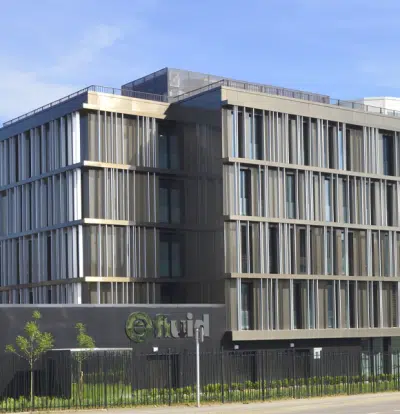
Architect Thierry Van de Wyngaert Architectes Associés – Installation Briotet Semecourt
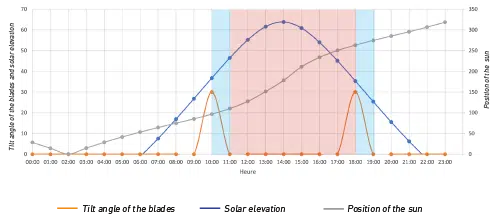
Summer scenario
Automated control for a clear-sky day with direct sunlight (city of Paris – southern facade):
The two blue zones, from 10:00 am to 11:00 am and from 6:00 pm to 7:00 pm, represent the times when the sun is at its lowest on the exposed facade. During these times, the control system adjusts the tilt angle of the sunshade blades to limit direct sunlight inside the building. The red zone represents the part of the day when the sun is high enough that the sunshade blades no longer need to be tilted.
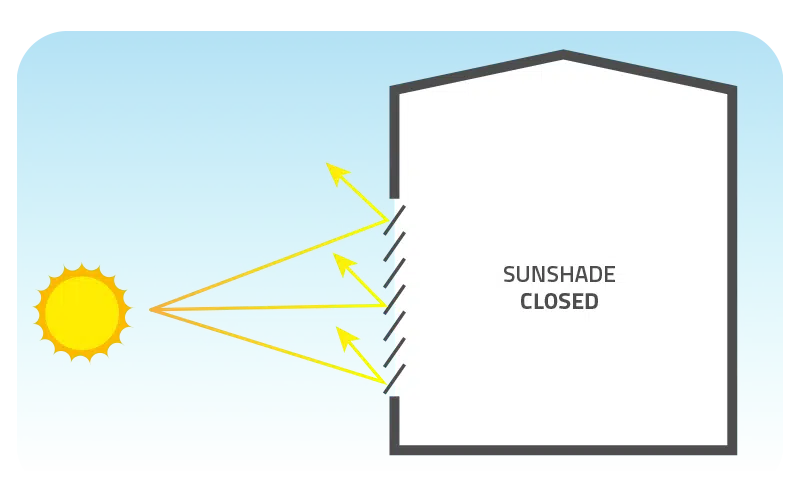
Sun position and sunshade tilt during
the time slots 10:00-11:00 am and 5:00-6:00 pm
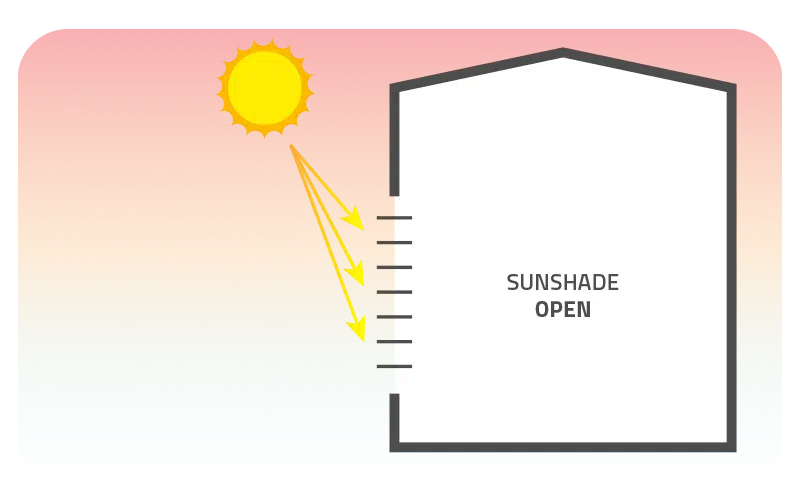
Sun position and sunshade tilt from 11:00 am to 5:00 pm
Winter scenario
Automated control for a clear-sky day with direct sunlight (city of Paris – southern facade):
Scénario 1 : Maximizing solar gains inside the building. The sunshades remain constantly at 0° to facilitate the penetration of direct sunlight into the building.
Scénario 2 : Minimization of glare inside the building. The tilt angle of the blades varies based on solar exposure.
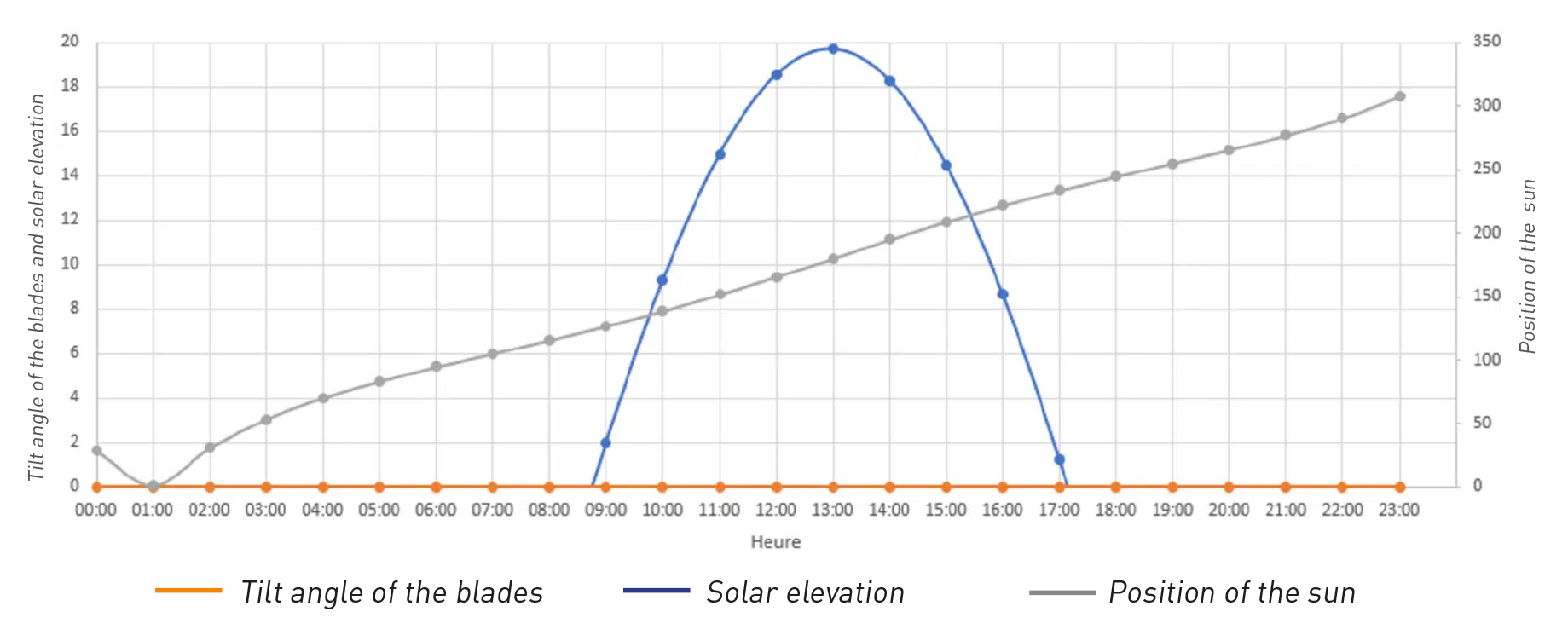
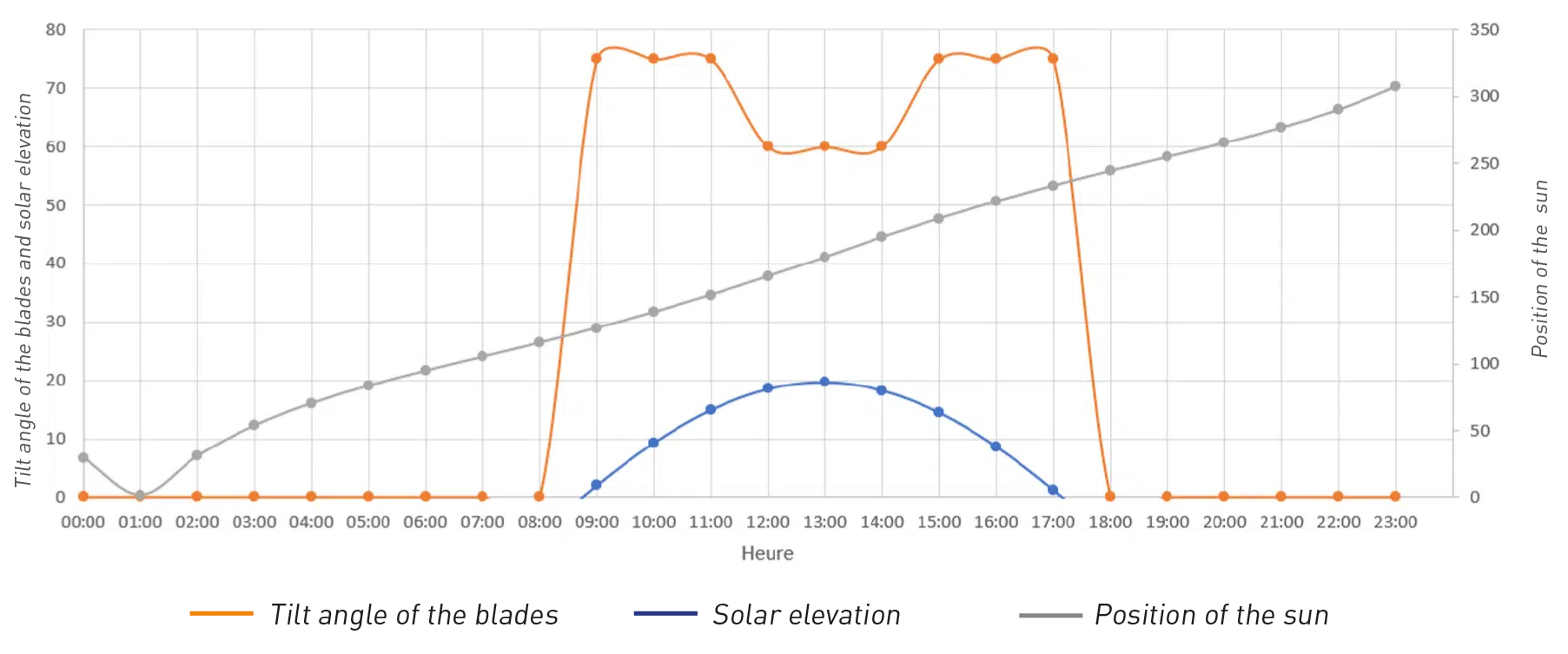
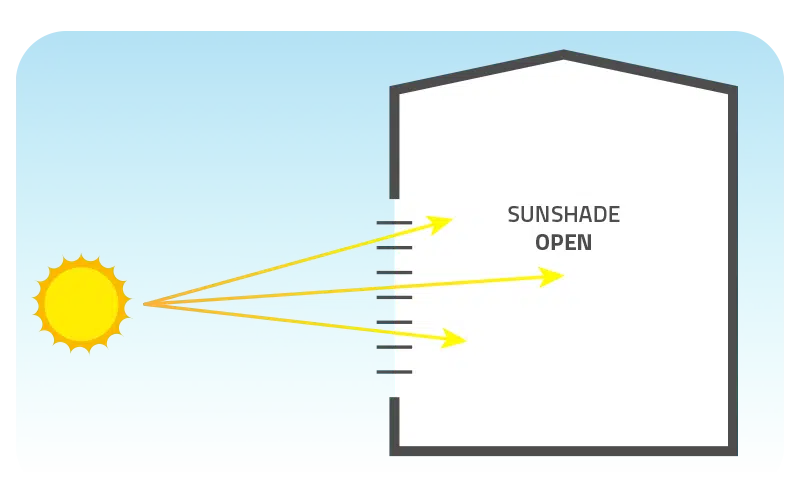
SCENARIO 1 : Maximizing solar gains

SCENARIO 2 : Reduction of glare

